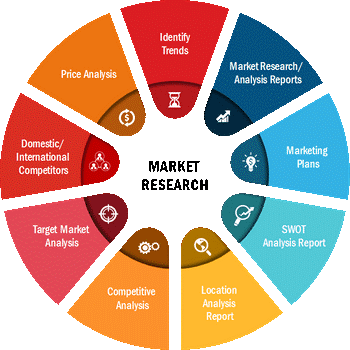バイオポリマー市場は、2022 年の 46 億米ドルから 140 億米ドルに成長すると予想されています2031年までに。 2022 年から 2031 年にかけて 11.5% の CAGR で成長すると推定されています。
バイオポリマーは、生物から得られるポリマーであり、完全に生分解性です。生体高分子の一般的な例には、タンパク質、炭水化物、DNA、RNA、脂質、核酸、ペプチドなどがあります。バイオポリマーは生物から構成されているため、炭素に対して完全に中立であり、容易にリサイクルまたは更新されます。バイオポリマーは、放出された CO2 を大気中に放出する代わりに作物が吸収するため、CO2 汚染を引き起こしません。バイオポリマーには、糖ベースのバイオポリマー、セルロースベースのバイオポリマー、合成ベースのバイオポリマー、天然ポリマーの 4 種類があります。
市場のダイナミクス
包装業界と自動車業界はバイオポリマーの主要消費者です。 バイオポリマー市場は、自動車および自動車業界からの需要包装業界と環境に優しい製品へのニーズの高まり。さらに、消費者の間で持続可能な製品に対する意識がバイオポリマー市場に有利な機会を生み出しています。さらに、医療業界は、生体適合性、生分解性、非細胞毒性などの特性により、インプラント用途のバイオポリマーの著名なユーザーの 1 つです。
市場範囲
「2031 年までの世界のバイオポリマー市場予測」は、世界市場の傾向分析に特に焦点を当てた、バイオポリマー市場の専門的で詳細な調査です。このレポートは、種類と用途に基づいて詳細な市場分割を行い、バイオポリマー市場の概要を提供することを目的としています。このレポートは、主要な市場プレーヤーの財務実績に基づいた主要な統計を提供します。また、市場の主要なトレンドと機会も提供します。
戦略的洞察
市場セグメンテーション >
世界のバイオポリマー市場は、種類と種類に基づいて二分化されています。応用。種類に基づいて、市場はバイオポリエチレン(Bio-PE)、ポリ乳酸(PLA)、バイオベースのポリエチレンテレフタレート(PET)、バイオポリエステルなどに分類されます。市場は用途に基づいて、パッケージング、医療用インプラント、自動車、 シード コーティング、その他。
地域的枠組み
世界のバイオポリマー市場は次のように分類されます。北米、ヨーロッパ、アジア太平洋 (APAC)、中東およびアフリカ (MEA)、南米の 5 つの主要地域。このレポートでは、世界 18 か国の分析と予測に加え、上記の地域で広まっている現在の傾向と機会も取り上げています。
北米がバイオポリマー市場を支配しています。市場の成長は、多数のバイオポリマーメーカーの存在とバイオポリマーの高い採用率によるものです。この地域の主要なバイオポリマーメーカーには、BASF SE、Biopolymer International、Braskem SA、Corbion NV、Danimer Scientific などがあります。これらのサプライヤーは、最終用途産業からの絶え間ない需要を目の当たりにしています。以下の図は、世界のバイオポリマー市場の収益成長傾向を示しています:
出典: Insight Partners 分析
レポートは、バイオポリマー市場に影響を与える推進要因、制約、機会、将来の傾向などの要因を分析します。また、ポーターの 5 つの力による徹底的な分析も提供し、これらの地域のバイオポリマー市場に影響を与える要因を明らかにしています。
新型コロナウイルス感染症(COVID-19)のパンデミックの影響
新型コロナウイルス感染症(COVID-19)のパンデミックの影響により、化学や化学などの多くの業界が影響を受けています。材料および自動車産業は、世界的なサプライチェーンの混乱により、さまざまな商品の製造、納期スケジュール、販売に悪影響を及ぼし、前例のない課題に直面しました。バイオポリマーの市場規模は、いくつかの産業分野の成長の鈍化により縮小しました。 SARS-CoV-2の蔓延と戦うために、多くの生産施設が部分的または完全に閉鎖された。新型コロナウイルス感染症のパンデミックは、需要と供給の大きなギャップにより、バイオポリマーの価格変動も引き起こしました。しかし、2021年よりパッケージ&デザインが変更になりました。自動車産業は力強い成長を続けており、この成長傾向は今後も続くと予想されています。したがって、バイオポリマーの消費量の増加は、予測期間中に市場を押し上げる可能性があります。
市場参加者
レポートは、バイオポリマー市場の有機および無機成長戦略における主要な展開をカバーしています。さまざまな企業が、製品の発売、製品の承認、特許、イベントなどの有機的な成長戦略に焦点を当てています。市場で目撃された無機的な成長戦略活動は、買収、パートナーシップ、コラボレーションでした。これらの活動により、市場関係者のビジネスと顧客ベースの拡大が促進されました。バイオポリマー市場で事業を展開するプレーヤーは、バイオポリマーの需要の高まりにより、今後数年間で有利な成長機会を提供すると予想されます。
このレポートには、バイオポリマー市場で事業を展開している主要企業のプロフィールと、SWOT 分析および市場戦略が含まれています。このレポートは、企業概要、提供されるコンポーネントとサービス、過去 3 年間の財務情報、過去 5 年間の主な開発などの情報を含む業界の主要企業にも焦点を当てています。
バイオポリマー市場に携わる数社のリストを以下に示します。
- BASF SE
- バイオポリマー インターナショナル
- ブラスケム SA
- Corbion NV
- Danimer Scientific
- HARBEC, Inc.
- メリディアン ホールディングス グループ株式会社
- Metabolix, Inc.
- NatureWorks LLC
- ソラニル バイオポリマー
Insight Partner の専任の調査分析チームは、高度な統計専門知識を持つ経験豊富な専門家で構成されており、既存の調査にさまざまなカスタマイズ オプションを提供します。

- 過去2年間の分析、基準年、CAGRによる予測(7年間)
- PEST分析とSWOT分析
- 市場規模価値/数量 - 世界、地域、国
- 業界と競争環境
- Excel データセット
最新レポート
関連レポート
お客様の声
購入理由
- 情報に基づいた意思決定
- 市場動向の理解
- 競合分析
- 顧客インサイト
- 市場予測
- リスク軽減
- 戦略計画
- 投資の正当性
- 新興市場の特定
- マーケティング戦略の強化
- 業務効率の向上
- 規制動向への対応




















 無料サンプルを入手 - バイオポリマー市場
無料サンプルを入手 - バイオポリマー市場